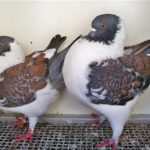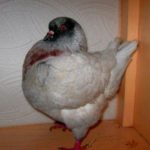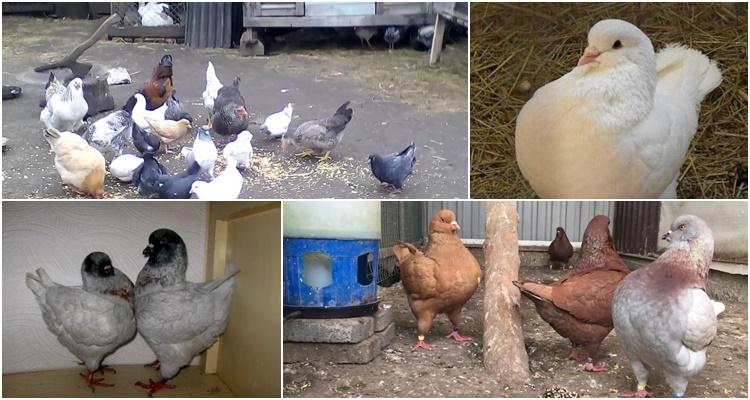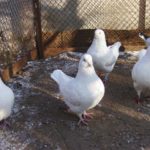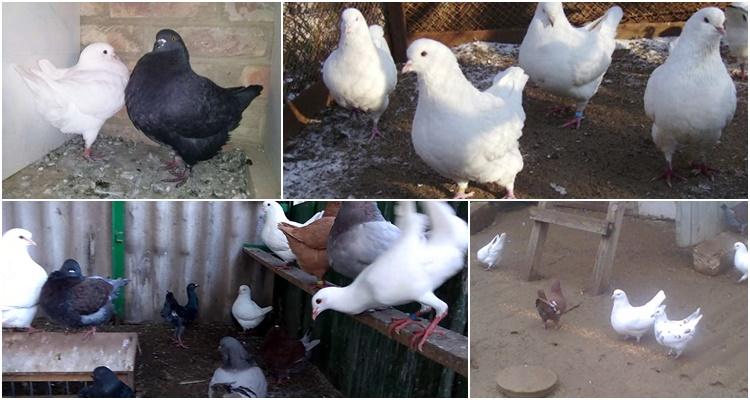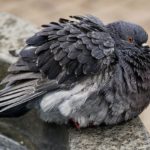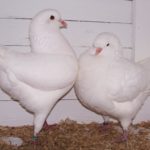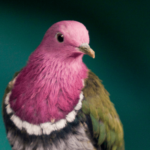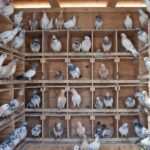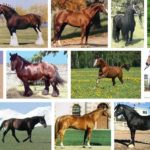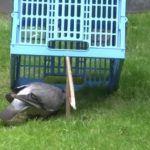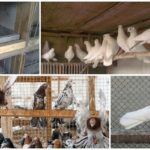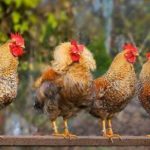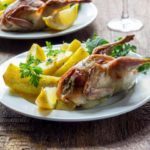The King breed was developed in the 19th century in the USA from crossing Maltese, Roman and Postal breeds. Purpose – obtaining meat and decorative. Let's consider the description and important characteristics of king pigeons, their main pros and cons, features of keeping and care in the household. How to properly breed birds, how to prevent diseases and carry out their prevention.
Description and characteristics of king pigeons
Pigeons of this breed are large, stately, and have a dense build. On average, they weigh 0.7-0.8 kg, maximum – 1.1 kg.The head is large, with a developed beak. The back is wide, rounded chest, thick neck. The wings are short, the legs are red, of medium length, without feathers. The plumage is smooth, the tail is short. Kings are uniformly colored, often having light brown, red, white and black feathers. But you can also find silver, blue, and yellowish birds.
Kings, as representatives of a meat breed, grow quickly. At 4 months they can weigh 0.6 kg. At this age they can be slaughtered. Slaughter yield of meat is 60-67%. Young pigeon meat is moderately fatty and non-fibrous. If you leave the pigeons to fatten further, they will gain more weight, but the meat will become a little tougher. As a meat breed, Kings are extremely common in America and beyond. They are popular in other countries too.
Main pros and cons
How to properly keep and care for birds
Pigeons of the breed are not too demanding on conditions and can be raised in a spacious poultry house. But it is advisable, for better health and weight gain, to provide a covered walking area next to the poultry house. Inside the dovecote you need to install a ventilation system, heating, and lighting if necessary. Kings, due to their heavy weight, are reluctant to fly, but behave calmly when walking.
Pigeons are fed grain and legume mixtures, into which you can put any grain; large ones, such as peas and corn, need to be chopped. Fresh herbs, some grated vegetables, and feed additives are added to the grain.Minerals and vitamins have a beneficial effect on the development of the bird's body, the maturation of young animals and future fertility, and prevent and protect against diseases.
An adult bird can eat 50-65 g of grain per day. This amount should be divided equally and given to pigeons 2 times a day. You cannot feed spoiled, sour, and especially moldy food. Water in drinking bowls should be poured around the clock. It needs to be changed every day. In winter, heat it up if the room is cold.
Subtleties of reproduction
Kings are a prolific breed. Birds become suitable for breeding at 6-8 months; they have 5-6 broods per year. Oviposition occurs 1.5-2 weeks after mating, the doves lay 1-2 eggs. The offspring are incubated for 16-19 days.
A week after the start of hatching, the eggs need to be checked in the light for the development of the embryo, since it happens that not all eggs are fertilized. In fertilized specimens you can see a dark spot - this is the embryo. The changed color of the shell also indicates the successful development of the chick. After a week of incubation, it becomes dull gray.
Kings fly poorly, so nests need to be placed on the ground or low above the floor. You need to attach a ladder to the shelves, along which the females will climb up. Nests should be placed not side by side, but at intervals, because females do not like close proximity to each other.
While incubation lasts, you should not disturb the females, remove them from the nest, touch or turn over the eggs.Due to interference, the bird may abandon the nest and the embryos will die. After hatching, the pigeons remain for a month with the females, who feed them first with secretions secreted in the crop, then feed them with grains and gradually transfer them to adult food. Male kings are sometimes mated with females belonging to sporting breeds. The result is offspring with excellent meat characteristics.
Disease Prevention
Kings do not have diseases unique to them, for example, genetic ones. But, like other breeds of pigeons, they can develop viral and bacterial infections. Kings suffer from salmonellosis, coccidiosis, psittacosis, paratyphoid, trichomoniasis, and birds are affected by helminthic infestations.
Diseases spread quickly and the entire flock can become infected. You will need treatment, which is not cheap. Therefore, it is recommended to carry out preventive treatments of young and adult pigeons with antiparasitic and anti-infective drugs, and carry out routine vaccination. New birds purchased from other farms must first be quarantined for at least 2-3 weeks and only then sent to others.
You need to maintain immunity by proper feeding, cleaning the poultry house, aviary, and nests. Sterilize all equipment and premises 2 times a year or more often. In a clean dovecote, the likelihood of infection is always lower. Pigeons need to be let out for a walk; walking has a beneficial effect on the psyche and physical health.
The King breed is known to lovers as a meat breed and at the same time decorative. It is grown by both private owners and farmers. Keeping birds is not difficult; they require standard care and nutrition. Pigeons are fertile, grow quickly, and can be raised for meat for your own consumption or for sale.

